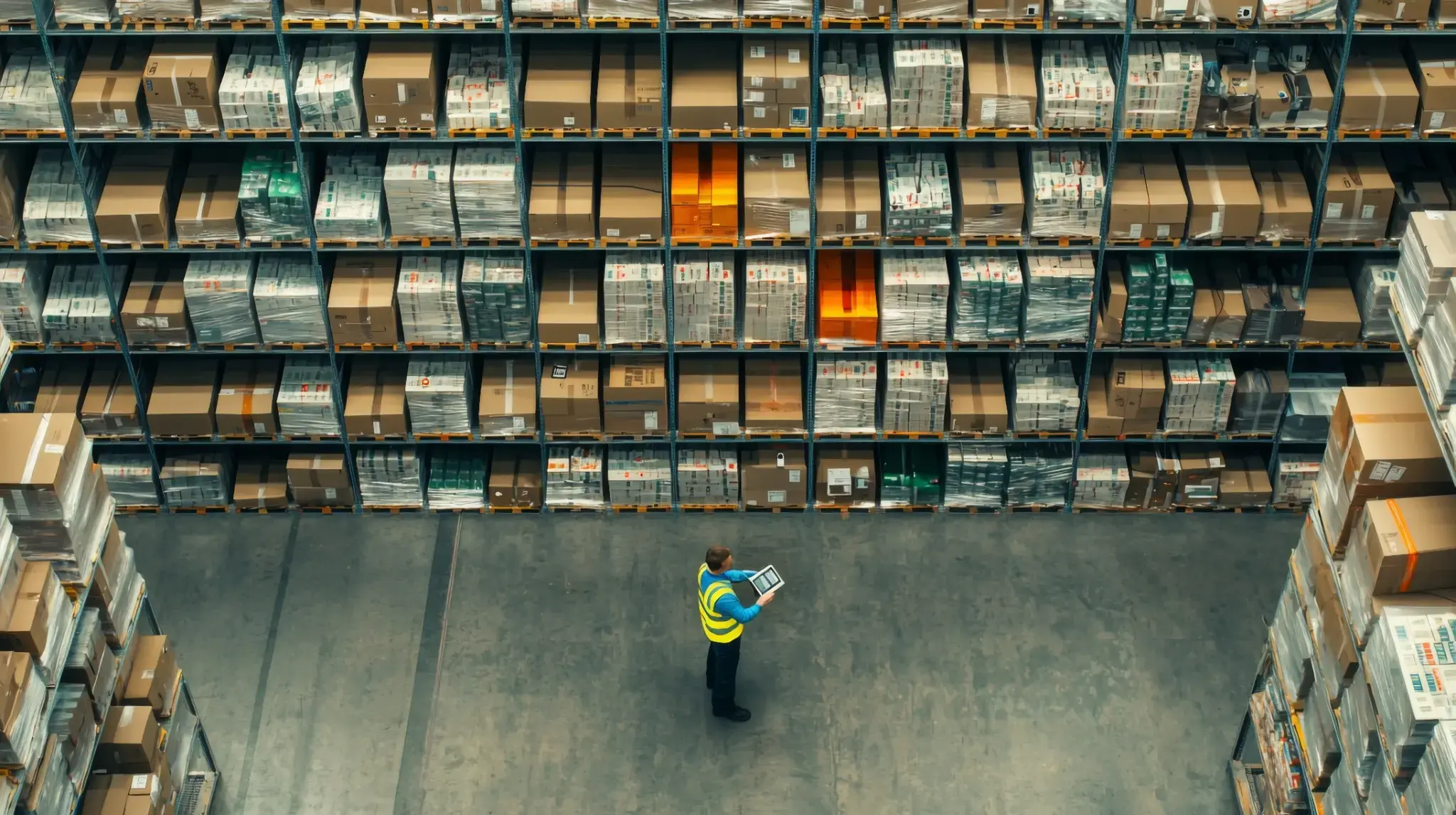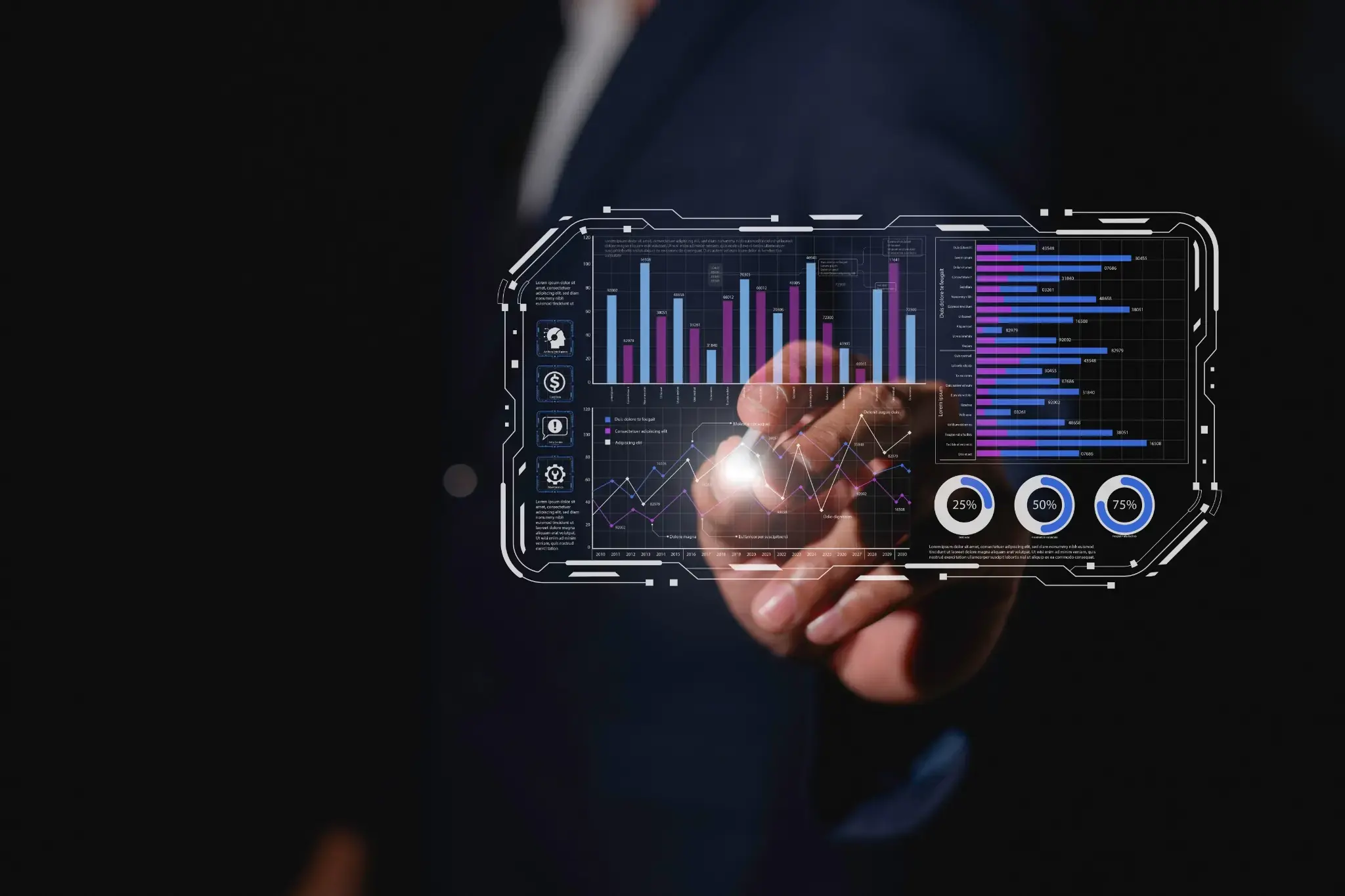What to expect from retail software development services in 2025

José Ángel Labbad
Project Management Office Director
Retail software is no longer just about transactions. It is about ecosystems: data-rich, real-time, AI-augmented environments that evolve alongside consumer behavior. In 2025, retail software development services are expected to deliver more than functional platforms.
Instead, they need to build digital infrastructure that adapts fast, integrates seamlessly, and puts intelligence at the core of every experience.
Smarter foundations: AI will be everywhere, but not invisible
AI is not a feature anymore; it is the foundation. Retailers are moving beyond basic recommendation engines into systems that predict, personalize, and automate decisions across the entire shopping journey.
Customer segmentation is no longer built around static personas; it is algorithmically adjusted based on live behavior, weather, and location. Inventory decisions are guided by predictive models, not guesswork. In some cases, AI-generated content fills product listings or crafts tailored copy based on past purchases.
This is not theoretical. Brands like Victoria’s Secret, Swarovski, and Caleres are actively using AI to transform product recommendations, customer support, and search. One executive noted AI-driven recommendations account for 10% of online sales; no longer an experiment.
Retailers expect more from their systems, and development partners have to meet that bar with native AI integrations that are flexible, explainable, and actually useful.
Not every company needs a custom LLM, but every retail software stack in 2025 needs to be AI-ready. This includes smart data pipelines, accessible machine learning interfaces, and structured outputs that tie directly into customer-facing features.
Microservices and modular thinking are the new normal
Speed of change is critical in retail, and traditional monolithic architectures just don’t keep up. That is why retail software in 2025 is increasingly built on modular foundations: microservices, composable commerce layers, and event-driven APIs.
The shift toward composability allows retailers to upgrade parts of their system (say, checkout, returns, or loyalty) without replatforming the entire thing. It also unlocks the ability to A/B test new features without putting core systems at risk.
Under the hood, this means developers are working with distributed systems built on technologies like Kafka, Kubernetes, and serverless functions. They are the building blocks that let teams ship faster, deploy independently, and scale features on demand.
Retailers are looking for partners who understand how to design systems that evolve. That means decoupled frontends, scalable middleware, and clean integration points between store operations, ecommerce engines, and customer engagement tools.
The line between in-store and digital is gone
Retail in 2025 does not distinguish between “online” and “offline.” It is all one experience. That means retail software development services now have to bridge the physical-digital divide. Not as an optional enhancement, but as a core requirement.
From virtual try-ons to IoT-powered smart shelves and frictionless checkout experiences, the demand is real and growing.
According to McKinsey, more than 75% of global retailers will adopt in-store tech tied directly to their ecommerce systems. That includes AR product overlays, real-time inventory sensors, location-based push offers, and dynamic pricing at the shelf level.
All of these require one thing: systems that talk to each other in real time. Retailers are not looking for experimental tech. They want grounded, maintainable software that integrates cleanly with their operations and delivers measurable value.
It is here where retail software development services prove their expertise. Software that does not just “support AR” or “connect to a kiosk” but treats these interfaces as part of a fluid customer journey. Systems that unify user sessions across devices and environments. That is where the best teams stand out.
Testing, compliance, and trust are now product features
In a landscape shaped by data privacy laws, cyber threats, and customer skepticism, it is no longer enough for software to just work. It also has to be secure, reliable, and transparent. Testing and compliance are not just backend functions. They are strategic differentiators.
Retailers in 2025 are demanding continuous testing pipelines, privacy-aware data architectures, and AI tools that are explainable and auditable. They are asking tough questions: How do we validate the logic behind our personalization engine? What happens if an AI misclassifies a customer or makes a biased decision?
Retail software development services need to respond with systems that include versioned models, audit trails, role-based data access, and native encryption. Just as importantly, they need to embed monitoring, alerting, and real-time feedback loops from day one.
For fast-moving retailers, trust is not just about regulation. It is about brand. And the software they use plays a central role in how that trust is won or lost.
.png?width=1000&height=664&name=unnamed%20(17).png)
Low-code does not mean low impact
One of the biggest shifts in 2025 is the rise of low-code and no-code platforms. Marketing teams are building promo flows, operations is launching dashboards, and regional managers are tweaking in-store UIs, all without developer intervention.
But the value of low-code platforms does not come from unlimited freedom. It comes from well-designed guardrails. The most effective implementations are governed: backed by secure APIs, version control, access permissions, and integration hooks that make the tools safe and powerful.
Retail software development services are not expected to invent new platforms, but they are expected to make the right ones work. That means building APIs and systems with extensibility in mind, then partnering with the business to make those capabilities accessible across the organization.
In fast-moving environments, the ability to deliver quickly is critical. Low-code makes that possible, but only when paired with the right structure and support.
Sustainability and transparency are now built in
Retailers cannot afford to treat sustainability as an afterthought. From carbon impact tracking to supply chain transparency, the demand for measurable sustainability data is growing, especially from Gen Z consumers and regulatory bodies.
Retail software services in 2025 are expected to include sustainability reporting as a core feature: capturing supplier emissions, flagging eco-friendly products, integrating with circular economy partners, and automating disclosures. It is not about greenwashing. It is about visibility.
This adds another layer of complexity to system design. Teams have to integrate data sources that were once outside the scope of ecommerce, logistics partners, packaging vendors, and even recycling networks.
But retailers who embrace this challenge are already seeing the reward: stronger customer loyalty, simplified compliance, and new forms of brand equity.
The quiet power of well-aligned teams
All of this innovation, from AI layers to real-time IoT to security and sustainability, depends on execution. And increasingly, that execution is coming from specialized nearshore teams who work in lockstep with their clients.
Time zone overlap. Deep technical fluency. Cultural alignment. These are not soft benefits. They are what makes agile development actually work in practice. More and more, brands are realizing that where and how their software is built is just as important as the features it offers.
At Bertoni Solutions, we have seen this firsthand. Working closely with retail leaders across Europe and the U.S., our teams have built platforms that match the pace, polish, and precision that modern retail demands.
From composable architectures to AR-integrated mobile apps, we have helped clients deliver systems that don’t just meet the spec, they anticipate what is next.
In a market moving this fast, that is what defines a good software partner.
Final thoughts
Retail software development services in 2025 are expected to deliver intelligent, composable, secure, and scalable systems that support every moment of the customer journey. From AI engines to checkout flows, from sustainability metrics to store-level experiences. What used to be considered “future-ready” is now simply table stakes.
The challenge is not in understanding what needs to be done. It is in finding the right partner to build it right.
If you are planning a major retail upgrade or need a team that understands both the architecture and the urgency, let’s talk. We constantly help retail brands turn vision into velocity, so book a consultation now.


.webp?width=300&height=200&name=make-an-appointment%20(1).webp)

.webp)


